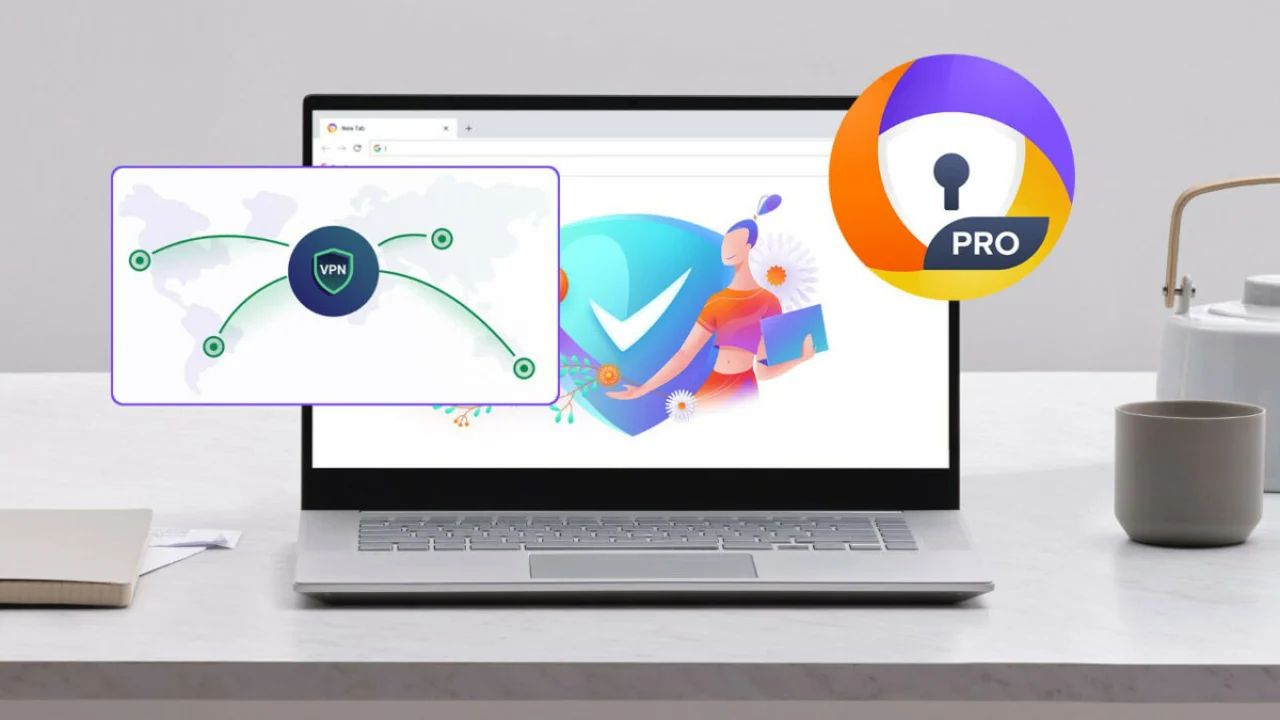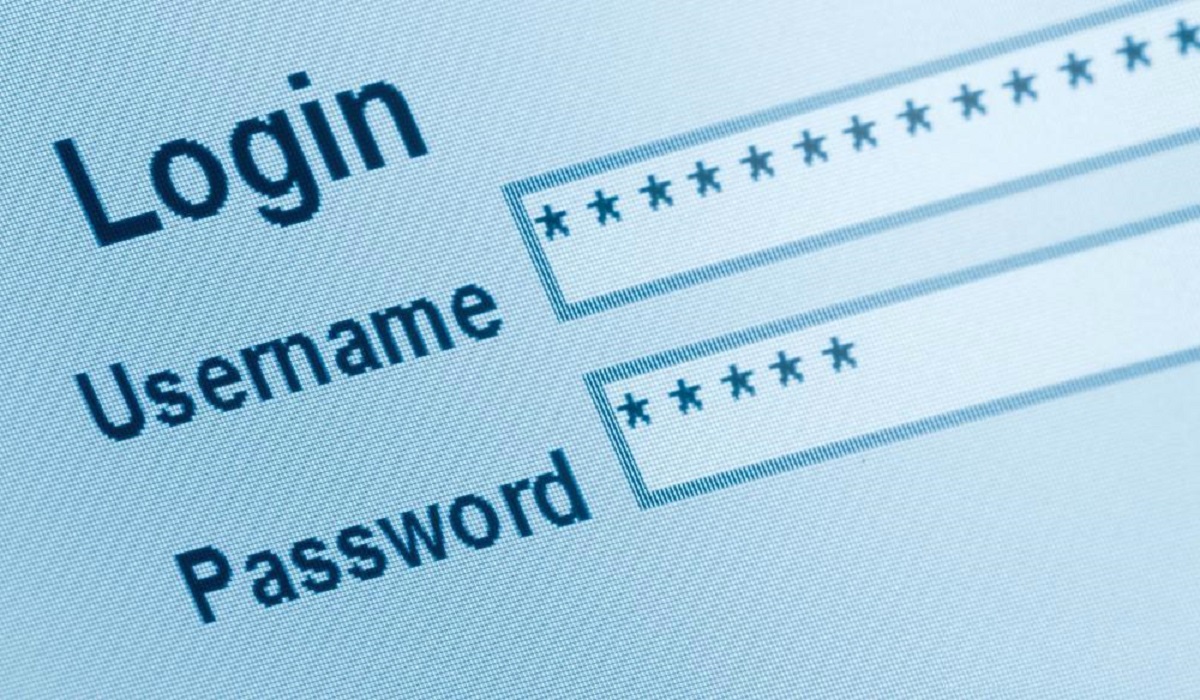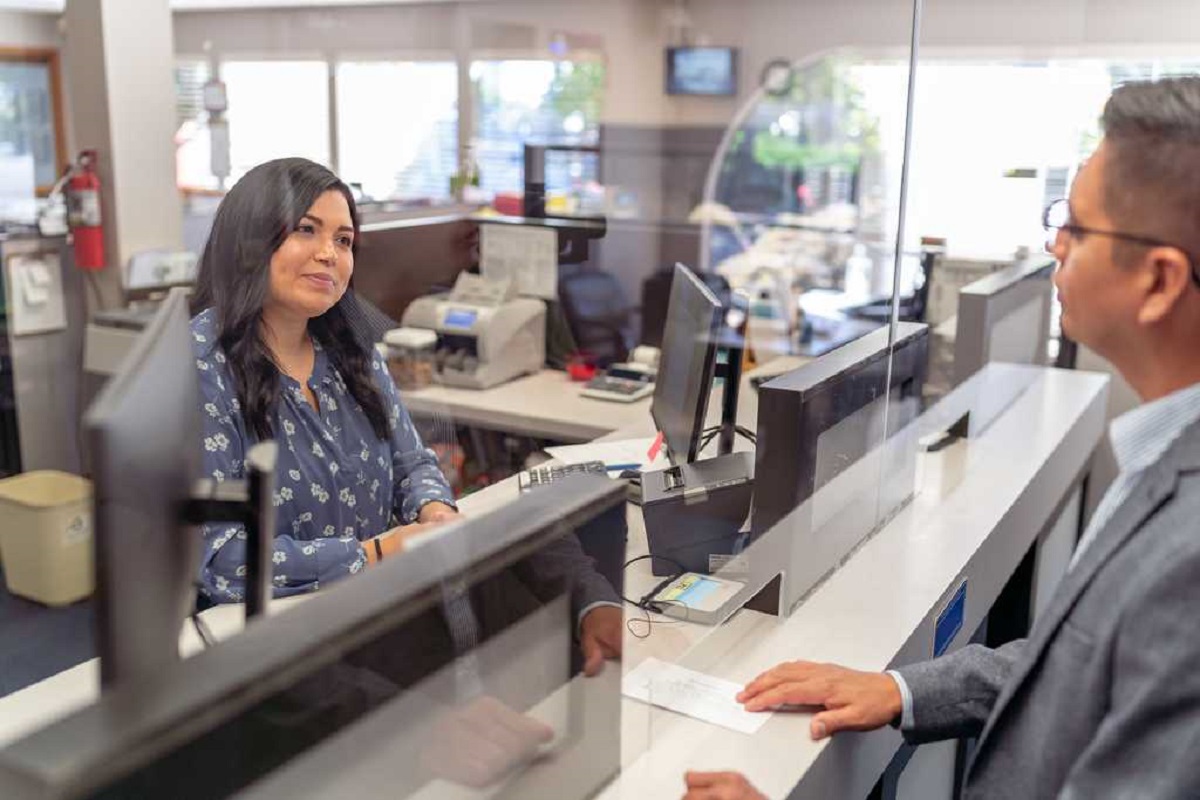Introduction
Welcome to the digital age, where convenience and accessibility are at the forefront of almost every aspect of our lives. In today’s fast-paced world, online banking has become increasingly popular, revolutionizing the way people manage their finances. Gone are the days of waiting in long queues at the bank or struggling to balance a checkbook. With the advent of online banking, financial transactions are just a few clicks away.
Online banking, also known as internet banking or e-banking, refers to the process of conducting banking activities through a website or mobile application provided by a bank or financial institution. It enables customers to perform various financial tasks, such as managing accounts, making payments, transferring funds, and accessing detailed transaction histories, all from the comfort of their own homes or on the go.
The rise of online banking can largely be attributed to rapid advancements in technology. With the widespread availability of smartphones and the increasing accessibility of the internet, more and more people are embracing the convenience and efficiency of online banking. In fact, according to a recent survey, over 70% of adults in the United States now use online banking as their primary method of managing their finances.
Online banking offers numerous benefits that traditional banking methods simply can’t match. It allows customers to have 24/7 access to their accounts, giving them the flexibility to conduct transactions at any time and from anywhere in the world. Whether you’re traveling, working late, or simply prefer the convenience of banking from home, online banking eliminates the need to visit physical bank branches during their limited operating hours.
Moreover, online banking provides a range of tools and features that empower customers to take control of their financial well-being. With real-time updates on account balances and transaction histories, individuals can easily monitor their spending, identify any unauthorized activity, and make more informed financial decisions.
Not only does online banking save time, but it also saves money. By conducting transactions online, customers can avoid costly bank fees associated with traditional banking methods. Additionally, the ability to pay bills and transfer funds electronically reduces the need for checks, envelopes, and stamps, resulting in tangible cost savings.
However, the convenience and benefits of online banking do come with some potential risks. As the use of online banking increases, so does the number of cyber threats and attacks. Hackers are constantly evolving their techniques, seeking to exploit vulnerabilities in online banking systems to gain unauthorized access to sensitive financial information. Therefore, it is crucial for individuals to understand the security measures in place and take appropriate precautions to safeguard their online banking activities.
In the following sections, we will delve deeper into the intricacies of online banking, including its different types, how it works, security measures in place, and tips for safe online banking. So, buckle up and get ready to explore the fascinating world of online banking!
What is Online Banking?
Online banking is a digital banking system that allows individuals to manage their finances and conduct various banking transactions through a secure website or mobile application provided by their financial institution. With online banking, customers can access their accounts, view balances, transfer funds, pay bills, apply for loans, and perform a wide range of other banking tasks, all without the need to visit a physical bank branch. This convenient and efficient method of banking has gained popularity due to its accessibility and time-saving features.
One of the main components of online banking is the secure login process. Customers are required to create an online banking account with their financial institution, which typically involves setting up a username and password combination. This login information ensures that only authorized individuals can access their accounts and conduct banking transactions. Some financial institutions may also incorporate additional security measures, such as two-factor authentication, to provide an extra layer of protection against unauthorized access.
Through online banking, customers can access their account information at any time, from anywhere in the world, as long as they have an internet connection. This level of accessibility allows individuals to monitor their financial activities, view transaction histories, and check their account balances in real time. They can also set up alerts and notifications to receive updates on certain account activities, such as large withdrawals or low balances.
In addition to basic account management, online banking provides a wide range of services and features. Customers can transfer funds between their own accounts, as well as to other accounts within the same financial institution or even to accounts at different banks. They can schedule bill payments, set up recurring transfers, and automate savings contributions. Online banking also offers the convenience of electronic statements, eliminating the need for paper statements and reducing clutter.
Beyond the traditional functions, some financial institutions have expanded their online banking services to include investment management, loan applications, and even virtual financial advisors. Customers can easily track their investments, apply for loans online, and receive personalized financial advice based on their financial goals and risk tolerance.
Overall, online banking provides individuals with a convenient and efficient way to manage their finances. It eliminates the need for physical visits to bank branches, allows for quick and easy access to account information, and offers a wide range of services and features. However, it’s essential for customers to familiarize themselves with the security measures in place and take necessary precautions to ensure the safety of their online banking activities.
Why is Online Banking Popular?
The popularity of online banking has skyrocketed in recent years, and for good reason. The numerous advantages and conveniences offered by online banking have attracted millions of individuals to embrace this digital method of managing their finances. Here are some key reasons why online banking has become so popular:
Convenience: One of the primary reasons for the popularity of online banking is the convenience it offers. With online banking, customers have 24/7 access to their accounts, allowing them to perform financial tasks at any time and from anywhere in the world. Whether you’re at home, in the office, or on vacation, you can easily check your account balance, transfer funds, pay bills, and perform other banking activities without the need to visit a physical bank branch. This flexibility and accessibility fit well with today’s fast-paced lifestyles, where time is of the essence.
Time-Saving: Online banking eliminates the need to wait in long queues at the bank or spend time filling out paper forms. With just a few clicks, customers can complete transactions quickly and efficiently. Tasks that used to take hours or even days, such as transferring funds between accounts or applying for a loan, can now be done within minutes through online banking. This time-saving feature allows individuals to focus on other important aspects of their lives.
Cost-Saving: Online banking can help individuals save money. By conducting transactions online, customers can avoid fees associated with traditional banking methods, such as ATM fees, check printing fees, and monthly account maintenance fees. Additionally, by receiving statements electronically and opting for online bill payments, individuals can save on paper, postage, and other related costs. These cumulative savings can be significant over time.
Access to Information: Online banking provides customers with instant access to their account information. They can view their transaction history, check their balance in real time, monitor their spending patterns, and even download detailed statements for record-keeping purposes. This level of transparency empowers individuals to stay in control of their finances and make informed decisions based on accurate and up-to-date information.
Enhanced Security Measures: Online banking has come a long way in terms of security. Financial institutions employ advanced encryption protocols to protect customer data and ensure secure online transactions. They also implement multi-factor authentication processes and monitor account activities for any suspicious behavior. While cyber threats and fraud attempts are still a concern, online banking security measures continue to evolve to combat these risks.
Integration with Technology: The widespread use of smartphones and the internet has played a significant role in the popularity of online banking. Financial institutions have developed dedicated mobile banking applications that offer a seamless and user-friendly experience. Customers can easily access their accounts, perform transactions, and receive notifications on their mobile devices. This integration of technology into banking services has made online banking more convenient and appealing to tech-savvy individuals.
With the numerous advantages it offers, it’s no wonder that online banking has become the preferred method of managing finances for many. The convenience, time-saving features, cost savings, access to information, enhanced security measures, and integration with technology make online banking an attractive option for individuals looking for a more efficient and flexible banking experience.
Benefits of Online Banking
Online banking brings a host of benefits and advantages that have revolutionized the way individuals manage their finances. From convenience to cost savings, here are some key benefits of online banking:
Convenience: Online banking offers unmatched convenience, allowing customers to conduct financial transactions from the comfort of their homes or while on the go. Whether it’s checking account balances, transferring funds, paying bills, or applying for loans, all these tasks can be easily accomplished with a few clicks. No longer do individuals need to wait in long queues or adjust their schedules to visit a physical bank branch during limited operating hours.
24/7 Access: With online banking, customers have round-the-clock access to their accounts. They can check their balance, view transaction history, and perform actions at any time, even during non-banking hours or weekends. This accessibility provides added flexibility for managing personal finances, especially for those with hectic schedules or individuals residing in different time zones.
Time-saving: Time is a precious commodity, and online banking helps individuals save it. With online banking, transactions that used to take hours or even days can now be completed in a matter of minutes. Funds can be transferred between accounts, bills can be paid, and deposits can be made with just a few clicks, cutting down on unnecessary paperwork and reducing the time spent on banking-related tasks.
Cost savings: Online banking can help individuals save money by eliminating certain fees associated with traditional banking methods. Many financial institutions offer online-only accounts that have reduced or no monthly fees. Additionally, online banking reduces the need for paper-based transactions, such as checks and statements, which can minimize costs associated with printing, postage, and storage.
Enhanced Account Management: Online banking provides individuals with powerful tools to manage their accounts with ease. Customers can view their account history, download statements for record-keeping, set up alerts for low balances or unusual activity, and even categorize and analyze their spending patterns. These features enable individuals to make more informed financial decisions and gain better control over their financial well-being.
Quick and Easy Transactions: Online banking facilitates swift and hassle-free transactions. Payments can be made electronically, eliminating the need for writing and mailing checks. Funds can be transferred between accounts instantly, allowing for seamless management of personal finances. Loans and credit applications can be submitted online, with faster processing and response times.
Security: While security is a concern in the digital realm, online banking has implemented various measures to safeguard customer information. Banks utilize strong encryption protocols, firewalls, secure login procedures, and multi-factor authentication to protect personal and financial data. Regular monitoring of account activity and robust fraud detection systems further enhance security measures.
Environmentally Friendly: By adopting online banking, individuals contribute to environmental conservation. Going paperless reduces the consumption of natural resources used in paper production. Additionally, electronic statements and notifications reduce waste and lower carbon emissions associated with physical mail delivery.
Online banking offers a multitude of benefits that enhance the banking experience for individuals. From the convenience and time-saving features to cost savings and improved account management, online banking has truly transformed the way people handle their financial affairs.
Types of Online Banking Services
Online banking services have evolved over time to cater to the diverse needs of customers. Financial institutions offer a variety of online banking services, each designed to simplify and streamline different aspects of personal finance. Here are some common types of online banking services:
1. Account Management: The fundamental online banking service is account management. Customers can access their accounts online and perform basic tasks such as checking balances, viewing transaction history, and downloading statements. This service allows individuals to monitor their finances and stay updated on the latest account activity.
2. Fund Transfers: Online banking simplifies fund transfers between accounts. Customers can move money between their own accounts, such as from checking to savings or vice versa. They can also transfer funds to external bank accounts, enabling seamless transactions with other financial institutions. This service facilitates quick and efficient movement of funds without the need for physical visits to the bank.
3. Bill Payment: Online banking offers the convenience of electronic bill payment. Customers can set up recurring bill payments or make one-time payments to utility companies, credit card issuers, or other service providers. This eliminates the need for writing checks, stuffing envelopes, and mailing payments, saving time and reducing the risk of late or missed payments.
4. Mobile Banking: With the proliferation of smartphones, mobile banking has become a significant segment of online banking services. Financial institutions provide dedicated mobile applications, allowing customers to access their accounts, make transactions, and receive notifications on their smartphones or tablets. Mobile banking offers the same features and functionalities as online banking but with the added convenience of on-the-go access.
5. Loan Applications: Online banking facilitates the application and approval process for loans. Customers can submit loan applications online, providing personal and financial information electronically. This streamlines the approval process and reduces the need for physical paperwork. Financial institutions can quickly review applications, communicate loan decisions, and disburse funds digitally, making the loan application process more efficient for both the borrower and the lender.
6. Investment Management: Some online banking services integrate investment management functionalities. Customers can track their investment portfolios, view stock prices and market updates in real time, and even execute buy/sell trades online. These services provide a streamlined approach to managing investments and offer users the ability to make informed investment decisions.
7. Virtual Financial Advisors: Online banking is also evolving to include virtual financial advisory services. Customers can access personalized financial advice, budgeting tips, and investment recommendations through online platforms or chat interfaces. Virtual financial advisors use algorithms and artificial intelligence to analyze customer data and provide tailored guidance based on individual financial goals and risk profiles.
8. Automated Savings: Online banking services often include automated savings features. Customers can set up recurring transfers from their checking accounts to their savings accounts, allowing them to effortlessly save money on a regular basis. This automated savings feature helps individuals build a financial cushion and achieve their savings goals without having to manually transfer funds each time.
These are just a few examples of the types of online banking services available. Financial institutions continue to innovate and expand online banking offerings to provide customers with a seamless and comprehensive digital banking experience.
How Does Online Banking Work?
Online banking relies on advanced technology and secure systems to provide a seamless and secure banking experience for customers. Here’s a step-by-step breakdown of how online banking works:
1. Account Setup: To access online banking services, individuals must first set up an account with their chosen financial institution. This typically involves providing personal information, such as name, address, social security number, and identification documents. After verifying the information, the financial institution assigns a unique username and password for the customer to log into their online banking account.
2. Secure Access: Once the account is set up, customers can securely access their online banking account using their assigned username and password. Some financial institutions may implement additional security measures, such as two-factor authentication, to provide an extra layer of protection. Two-factor authentication requires customers to enter a one-time code, usually sent to their registered mobile number or generated by an authentication app, to verify their identity.
3. Account Overview: Upon logging in, customers are presented with an account overview page that provides a snapshot of their financial information. This page typically displays account balances, recent transaction history, and alerts for any important account updates. This overview allows individuals to quickly assess their financial situation and stay updated on recent account activity.
4. Financial Transactions: Online banking allows customers to carry out various financial transactions. They can transfer funds between their own accounts, pay bills electronically, initiate external transfers to other bank accounts, and make loan or credit card payments. Financial institutions provide user-friendly forms and interfaces for customers to input transaction details and execute the desired transactions.
5. Account Management: Online banking platforms also enable users to manage their accounts efficiently. Customers can update personal information, change contact details, order new checks or debit cards, and request account statements. Many online banking systems have features that allow individuals to customize account settings, set up alerts for certain activities, and schedule recurring transactions for regular payments or transfers.
6. Security Measures: Online banking systems prioritize security to protect customer information and prevent unauthorized access. Financial institutions employ state-of-the-art encryption techniques to secure transactions and data transfers. They also have robust firewalls and intrusion detection systems to safeguard against cyber threats. Regular system updates and audits ensure that security measures remain up to date and effective.
7. Customer Support: Online banking platforms offer customer support services to assist users with any queries or issues they may encounter. Customers can often reach out to the bank’s support team via phone, email, or live chat for assistance with account-related matters or technical difficulties. Support agents are trained to address customer concerns promptly and provide guidance on using online banking features.
8. Continuous Development: Online banking is continuously evolving to meet customer demands and keep up with emerging technologies. Financial institutions regularly update their online banking platforms to introduce new features, enhance user interfaces, and improve security measures. Users can expect a seamless and user-friendly experience as banks strive to offer a digital banking experience that meets the needs and expectations of their customers.
By leveraging advanced technology, encryption protocols, and secure systems, online banking allows individuals to conveniently and safely manage their finances anytime, anywhere. It provides a range of services and features that streamline financial transactions and empower customers to take control of their financial well-being.
Security Measures in Online Banking
Online banking has become increasingly secure over time, with financial institutions implementing robust measures to protect customer information and prevent unauthorized access. To ensure the safety of online banking transactions, a range of security measures are in place. Here are some key security measures employed by online banking systems:
Encryption: Encryption is a crucial component of online banking security. Financial institutions use advanced encryption protocols, such as SSL (Secure Sockets Layer) or TLS (Transport Layer Security), to encrypt data and protect it during transmission. This technology converts sensitive information into unreadable code, ensuring that it remains secure even if intercepted by unauthorized parties.
Secure Login: Financial institutions enforce secure login processes to prevent unauthorized access to online banking accounts. This typically involves setting up usernames and passwords, which must meet certain complexity requirements. Some institutions also implement additional security measures, such as two-factor authentication, where users must provide an additional piece of information or a temporary code to verify their identity.
Network Firewalls: Online banking systems utilize network firewalls to protect against unauthorized access and cyber threats. Firewalls serve as barriers between the internal systems of the financial institution and the public internet, controlling incoming and outgoing network traffic and preventing unauthorized access to sensitive data.
Fraud Detection Systems: Financial institutions employ sophisticated fraud detection systems that monitor account activity to identify and prevent fraudulent transactions. These systems use algorithms and AI-powered technologies to analyze patterns and detect any suspicious or unusual behavior, such as large or out-of-pattern transactions, that may indicate fraudulent activity.
Secure Data Storage: Financial institutions have strict protocols for securely storing customer data. They implement measures such as data encryption, access controls, and regular backups to ensure the integrity and confidentiality of stored information. Data centers are often protected by physical security measures, including surveillance systems and access controls, to safeguard against unauthorized access.
Regular System Updates: Online banking systems undergo regular updates and maintenance to patch security vulnerabilities and maintain the effectiveness of security measures. Financial institutions work diligently to stay ahead of emerging threats and constantly evolve their security practices to fend off new cyber threats.
Customer Education: Financial institutions play a vital role in educating customers about online banking security best practices. They provide resources, guidelines, and tips to help users protect their accounts and personal information. Customers are encouraged to create strong passwords, avoid sharing sensitive information via email or unsecured websites, and stay informed about common phishing techniques and scams.
Vigilant Monitoring: Financial institutions continuously monitor account activities to detect and respond to any suspicious or unauthorized transactions. Automated systems are in place to flag and alert customers about potentially fraudulent transactions, enabling quick actions to mitigate any potential financial loss.
While these security measures are in place, it is crucial for users to adhere to best practices to ensure the security of their online banking activities. This includes regularly updating passwords, avoiding public Wi-Fi for sensitive transactions, and being cautious of phishing attempts and suspicious emails or messages.
By implementing a multi-layered approach to security and staying vigilant against emerging threats, online banking systems strive to ensure the safety and security of customer data and transactions.
Tips for Safe Online Banking
Online banking provides convenience and flexibility, but it’s important to prioritize security to protect your sensitive information and financial transactions. Here are some key tips to ensure safe online banking:
1. Use Strong and Unique Passwords: Create strong and unique passwords for your online banking accounts. Use a combination of letters, numbers, and special characters, and avoid using easily guessable information like your name or birthdate. Remember to change your passwords periodically and avoid reusing them across multiple accounts.
2. Enable Two-Factor Authentication: Opt for two-factor authentication if your online banking provider offers it. This adds an extra layer of security by requiring a second form of verification, such as a one-time code sent to your mobile device, in addition to your username and password.
3. Avoid Public Wi-Fi for Sensitive Transactions: Public Wi-Fi networks are not secure, and your personal information can potentially be intercepted by hackers. Avoid performing sensitive online banking transactions, such as accessing your account or making financial transfers, when connected to public Wi-Fi. Instead, use a secure and trusted network connection.
4. Update and Secure Your Devices: Keep your computer, smartphone, and other devices up to date with the latest security patches and updates. Install reputable anti-malware and antivirus software to protect against potential threats.
5. Be Wary of Phishing Attempts: Phishing emails and messages are common methods used by cybercriminals to trick individuals into revealing sensitive information. Be cautious of emails asking for personal or financial information and avoid clicking on suspicious links or downloading attachments from unknown sources. Legitimate financial institutions will never ask for sensitive information via email.
6. Use Official Banking Apps and Websites: Only access your online banking through official banking apps or websites. Be vigilant of phishing attempts that may mimic authentic banking interfaces. Verify the legitimacy of the website or app by checking for secure URLs (https://) and ensuring that the website’s security certificate is valid.
7. Monitor Your Accounts Regularly: Regularly review your online banking accounts and transaction history for any suspicious activity. Report any unauthorized transactions or discrepancies to your bank immediately.
8. Be Cautious with Personal Information: Exercise caution when providing personal information online, even on secure banking websites. Avoid sharing sensitive information unless it is necessary and you trust the source. Be cautious of sharing personal details over the phone or through unsolicited calls.
9. Log Out and Secure Your Sessions: Always log out of your online banking session after you have finished your transactions. If you are using a shared device or public computer, clear your browsing history and cache to remove any saved login information.
10. Regularly Monitor Your Credit: Check your credit report regularly to ensure that no unauthorized accounts or activities are appearing. Monitoring your credit can help you identify any potential identity theft or fraudulent activities.
By following these tips, you can significantly enhance the security of your online banking activities and reduce the risk of falling victim to fraud or identity theft.
The Future of Online Banking
The future of online banking holds exciting developments and innovations as technology continues to advance. Here are some key trends shaping the future of online banking:
1. Mobile-First Approach: Mobile banking is already on the rise, and it will continue to dominate the online banking landscape. With the increasing use of smartphones and tablets, financial institutions will prioritize the development of mobile banking apps and optimize their services for a seamless mobile experience.
2. Biometric Authentication: Biometric authentication, such as fingerprint and facial recognition technology, will become more prevalent in online banking. These secure and convenient methods will replace traditional username and password combinations, providing a higher level of security for customers.
3. Artificial Intelligence (AI) Integration: AI technologies will be integrated into online banking platforms to enhance customer experiences. AI-powered chatbots and virtual assistants will provide personalized assistance, handle routine queries, and help customers with account inquiries and transactions.
4. Enhanced Data Security: As cyber threats continue to evolve, online banking systems will adopt even more advanced security measures. These may include real-time transaction monitoring, behavior-based authentication, and threat intelligence systems to detect and prevent potential attacks.
5. Open Banking: Open banking, a concept that allows third-party financial service providers to access user data through secure APIs, will continue to gain traction. This will enable customers to have a more comprehensive view of their financial information, access innovative financial services, and easily switch between providers.
6. Personal Financial Management: Online banking platforms will increasingly focus on personal financial management tools. These tools will provide users with better insights into their spending habits, budgeting capabilities, goals tracking, and recommendations for improving financial health.
7. Integration with FinTech: Financial technology (FinTech) collaborations will expand, as online banking providers partner with FinTech companies to offer customers a wider range of services. Collaborations may include lending platforms, investment management tools, peer-to-peer payment systems, and more.
8. Blockchain Technology: The implementation of blockchain technology in online banking holds significant potential. Blockchain can improve transparency, security, and efficiency in areas like cross-border transactions, identity verification, and record-keeping, revolutionizing how online banking operates.
9. Voice Banking: Voice recognition technology, powered by virtual assistants like Amazon’s Alexa or Apple’s Siri, will play a larger role in online banking. Customers will be able to check account balances, make payments, and carry out other banking tasks using voice commands.
10. Enhanced Customer Experience: Online banking providers will continuously strive to improve the overall customer experience. This includes user-friendly interfaces, faster and more seamless transactions, personalized financial advice, and proactive customer support through various channels.
These trends indicate a promising future for online banking. As technology continues to advance and customer expectations evolve, financial institutions will adapt and innovate to provide secure, convenient, and personalized online banking experiences for their customers.
Conclusion
Online banking has revolutionized the way individuals manage their finances, offering unprecedented convenience, accessibility, and security. Through secure websites and mobile applications, customers can perform a wide range of banking activities at their fingertips.
During this journey, we explored the concept of online banking and its escalating popularity. We discussed the benefits of online banking, ranging from convenience and time-saving features to cost savings and enhanced account management. We also examined different types of online banking services, including account management, fund transfers, bill payment, mobile banking, loan applications, investment management, virtual financial advisors, and automated savings.
Understanding how online banking works is crucial for users to navigate the digital banking landscape with confidence. We discussed the account setup process, secure login procedures, account overview and transactions, and the wide array of security measures in place to protect customer information.
Furthermore, we provided valuable tips for safe online banking, emphasizing the importance of using strong and unique passwords, enabling two-factor authentication, avoiding public Wi-Fi networks, updating and securing devices, being cautious of phishing attempts, using official banking apps and websites, monitoring accounts regularly, protecting personal information, logging out of sessions, and monitoring credit reports.
Lastly, we touched on the future of online banking, highlighting trends such as a mobile-first approach, biometric authentication, AI integration, enhanced data security, open banking, personal financial management tools, integration with FinTech, blockchain technology, voice banking, and an enhanced customer experience.
In conclusion, online banking continues to evolve, offering innovative solutions that empower customers to easily and efficiently manage their finances. As technology continues to advance and security measures strengthen, online banking will undoubtedly become an increasingly integral part of our daily lives. By staying informed, practicing safe online banking habits, and embracing the future of digital banking, individuals can experience the convenience and benefits that online banking has to offer while safeguarding their financial well-being.

























